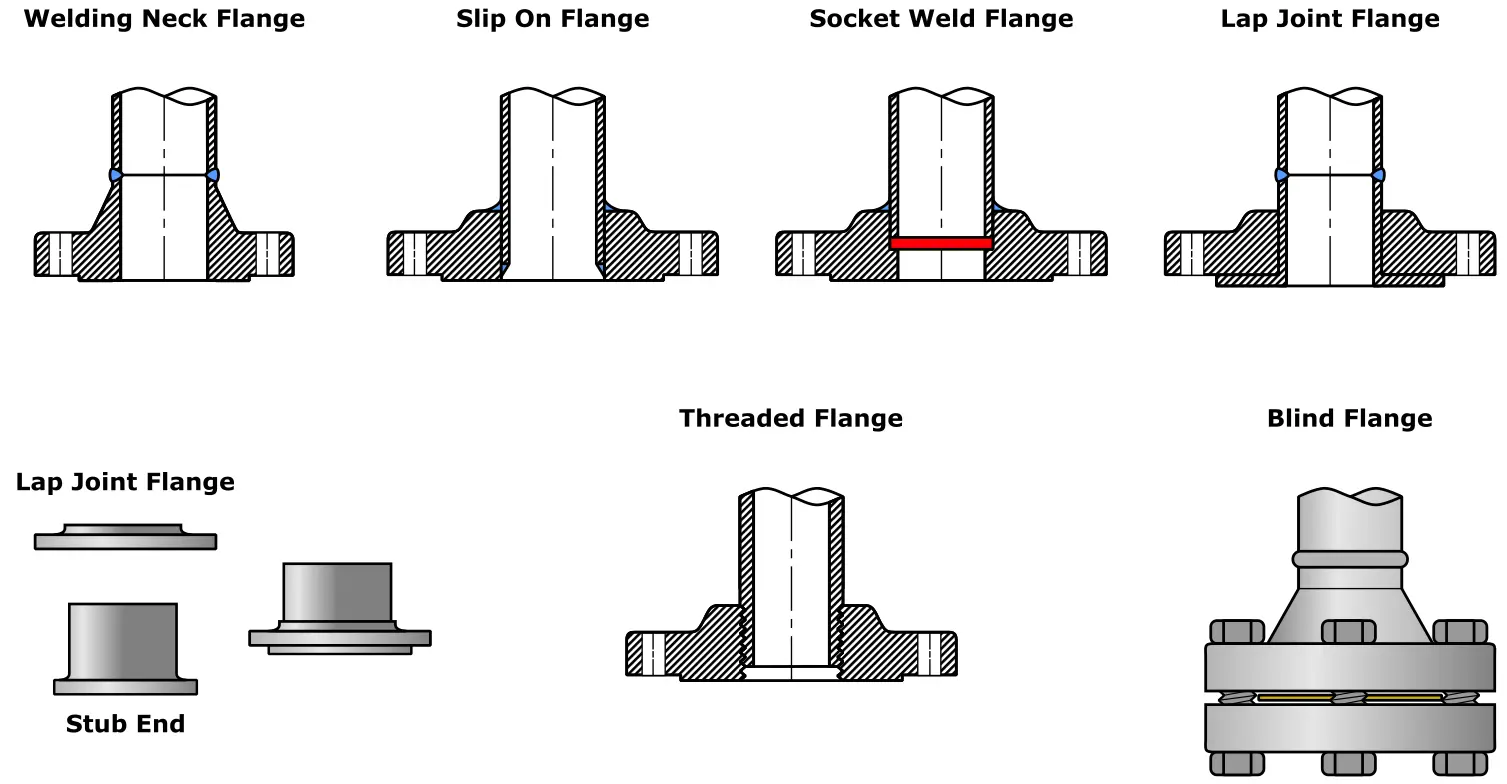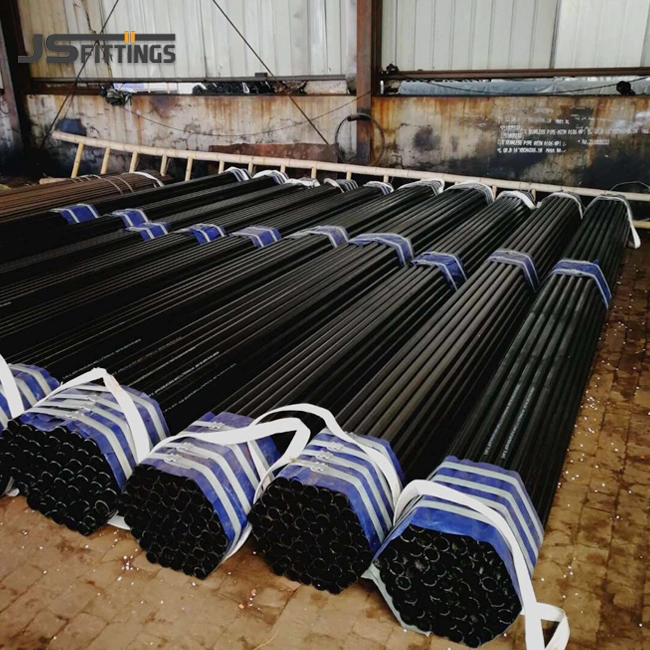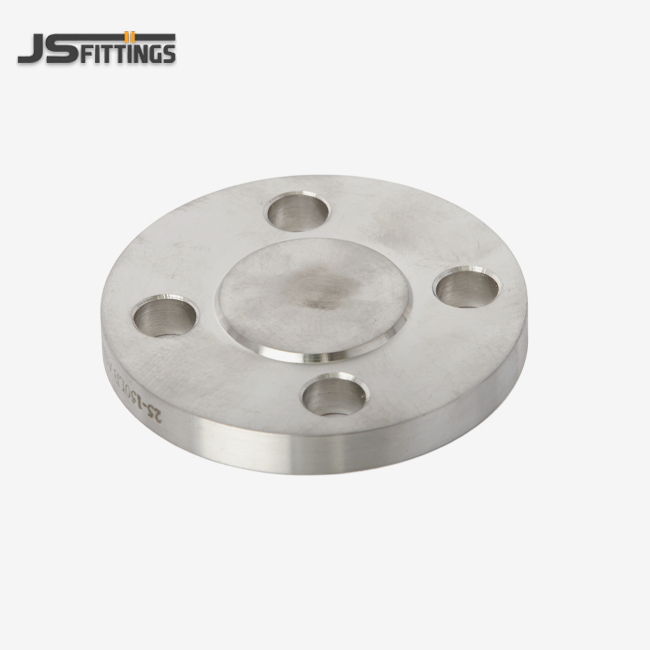The primary differences between weld neck pipe flange and socket weld flange lie in their connection methods, structural design, and application scenarios. A weld neck pipe flange features a tapered hub that provides seamless integration with seamless steel pipe through butt-welding, offering superior strength and fatigue resistance. Socket weld flanges, conversely, utilize a socket design where the pipe inserts into the flange bore and connects through fillet welding. This fundamental distinction affects pressure ratings, installation complexity, cost considerations, and maintenance requirements across various industrial piping applications.
Understanding Weld Neck Flange Construction and Design
When it comes to industrial pipe systems, weld neck flanges are one of the strongest types of flange connections. The unique tapered hub design makes the transition from the pipe wall to the flange face smooth. This gets rid of stress concentration spots that often lead to failure in high-pressure situations.
To make a full-penetration butt weld, both the pipe end and the flange hub must be beveled during the welding process. This arrangement makes sure that the wall thickness is the same all the way through the joint, which increases the structure's strength. Test results from ASME B31.3 standards show that weld neck connections that are done correctly get 100% joint efficiency scores.
Key structural advantages include:
- Continuous material flow from pipe to flange
- Enhanced fatigue resistance under cyclic loading
- Superior performance in high-temperature applications
- Optimal stress distribution across the connection
- Complete radiographic inspection capability
If you need maximum reliability for critical process lines operating above 600°F or 1500 PSI, then weld neck configurations prove more suitable for your application requirements.

Socket Weld Flange Characteristics and Applications
Socket weld flanges offer practical advantages for smaller diameter piping systems, typically ranging from 1/2 inch to 3 inches. The socket design accommodates pipe insertion with a deliberate gap maintained at the bottom to prevent stress concentration during thermal expansion.
Installation involves sliding the pipe into the flange socket until it bottoms out, then withdrawing approximately 1/16 inch before fillet welding. This gap accommodation prevents cracking from thermal stresses while maintaining adequate joint strength for moderate pressure applications.
Performance characteristics include:
- Simplified alignment during installation
- Reduced welding skill requirements
- Lower material costs for small bore applications
- Faster installation times
- Adequate strength for most utility services
Laboratory testing indicates socket weld joints achieve approximately 85-90% joint efficiency compared to seamless pipe, making them suitable for non-critical applications. If you need cost-effective solutions for instrument connections, sampling lines, or utility services below 1500 PSI, then socket weld flanges represent the optimal choice.
Pressure Rating and Temperature Performance Comparison
Pressure rating differences between these flange types significantly impact application selection. ANSI B16.5 standards establish maximum allowable working pressures based on temperature and material specifications.
Weld neck pipe flange maintain full pressure ratings across their entire temperature range due to the continuous material path. Test results show minimal pressure derating even at elevated temperatures approaching 1000°F.
Comparative pressure ratings (Carbon Steel, Class 300):
- At 100°F: Weld neck 740 PSI, Socket weld 740 PSI
- At 400°F: Weld neck 675 PSI, Socket weld 675 PSI
- At 650°F: Weld neck 535 PSI, Socket weld 450 PSI
- At 800°F: Weld neck 410 PSI, Socket weld 320 PSI
Socket weld limitations become apparent at higher temperatures where fillet weld geometry creates stress concentration. The transition from socket to pipe experiences accelerated derating above 650°F.
If you need consistent pressure containment across varying temperature conditions, then weld neck designs provide superior long-term performance reliability.
Installation Requirements and Welding Considerations
Installation procedures differ substantially between these flange connection methods. Weld neck installation requires certified welders capable of producing radiographic-quality butt welds with complete joint penetration.
Pre-installation requirements for weld neck flanges:
- Precise pipe cutting and beveling
- Careful fit-up and gap control
- Multiple welding passes with proper inter-pass cleaning
- Post-weld heat treatment for stress relief
- Non-destructive testing verification
Socket weld installation proves more straightforward, requiring basic fillet welding skills. The self-aligning socket design minimizes fit-up challenges while reducing welding time by approximately 40% compared to butt-weld procedures.
Socket weld installation steps:
- Square-cut pipe preparation
- Insert pipe into socket with proper gap
- Single-pass fillet weld application
- Visual inspection for completeness
If you need simplified installation procedures with reduced labor costs, then socket weld connections offer practical advantages for non-critical piping applications.
Cost Analysis and Economic Considerations
Economic factors significantly influence flange selection decisions across different project scales. Initial material costs, installation labor, and long-term maintenance expenses contribute to total ownership calculations.
Weld neck pipe flanges command premium pricing due to complex manufacturing requirements. The forged hub design requires additional machining operations, increasing production costs by 15-25% compared to socket weld alternatives.
Installation cost comparisons reveal:
- Welding time: Socket weld 30% faster than weld neck
- Skill requirements: Socket weld uses standard welders versus certified specialists
- Inspection costs: Weld neck requires radiographic testing
- Rework potential: Socket weld joints easier to modify
However, lifecycle cost analysis favors weld neck pipe flanges in critical applications. Reduced maintenance frequency, extended service life, and improved safety margins offset higher initial investments.
If you need to control project budget while maintaining adequate performance for utility services, then socket weld flanges deliver cost-effective solutions.
Safety and Compliance Standards
Safety considerations drive flange selection in critical process applications where failure consequences prove severe. Both connection types comply with ASME and ANSI standards, yet performance under extreme conditions varies significantly.
Weld neck flanges excel in applications requiring:
- Hazardous fluid containment
- High-consequence failure scenarios
- Seismic resistance requirements
- Fatigue-critical service conditions
- Full radiographic inspection capability
Socket weld connections provide adequate safety for non-critical applications but face limitations in severe service environments. The fillet weld geometry creates potential leak paths under extreme thermal cycling or vibration exposure.
According to industry data, weld neck connections fail 35% less often in high-pressure steam service than socket weld connections. This performance advantage is very important for situations when safety problems have serious effects.
Weld neck pipe flanges are the best way to lower risk if you need to minimize downtime or safety problems while still meeting strict industry standards.

Conclusion
The selection between weld neck pipe flanges and socket weld flanges depends on specific application requirements, performance expectations, and economic considerations. Weld neck flanges provide superior strength, pressure capability, and fatigue resistance for critical applications, while socket weld flanges offer cost-effective solutions for smaller diameter, moderate-pressure services. Understanding these fundamental differences enables informed decisions that optimize project outcomes while maintaining safety and compliance standards. Successful flange selection requires evaluating pressure ratings, temperature conditions, installation requirements, and lifecycle costs within your specific operational context.
FAQ
1. What pressure and temperature conditions can weld neck flanges handle?
They maintain full pressure ratings up to and beyond 1500 PSI and perform reliably at temperatures exceeding 600°F due to their continuous material flow.
2. What are the installation requirements?
Installation requires precise beveling, skilled welding, and non-destructive testing to achieve full-penetration weld integrity.
3. Are weld neck flanges more expensive?
Yes, but the higher initial cost is offset by superior safety, reduced maintenance, and longer service life in demanding industrial environments.
JS FITTINGS: Your Trusted Weld Neck Pipe Flange Manufacturer
Choosing the right flange connection directly impacts project success, safety performance, and long-term operational costs. JS FITTINGS brings over 40 years of manufacturing excellence to help you make informed decisions that minimize project risk while ensuring reliable performance.
Our comprehensive product portfolio includes premium weld neck pipe flanges manufactured to exacting ASME B16.5 and ANSI standards. Advanced production lines equipped with state-of-the-art forging and machining capabilities ensure consistent dimensional accuracy and material properties across every order.
Whether your project demands the superior strength of weld neck flanges or the cost-effectiveness of socket weld connections, our experienced team provides technical guidance ensuring optimal solutions. We understand the challenges facing EPC contractors, distributors, and industrial end-users in today's competitive marketplace.
Ready to discuss your specific flange requirements? Contact our technical specialists today and discover how JS FITTINGS delivers the performance, reliability, and value your projects demand. Reach out to our team and contact us at admin@chinajsgj.com to receive personalized recommendations and competitive pricing for your next project.
References
1. American Society of Mechanical Engineers. ASME B16.5-2020: Pipe Flanges and Flanged Fittings - NPS 1/2 Through NPS 24 Metric/Inch Standard. New York: ASME Press, 2020.
2. Bickford, John H. and Nassar, Sayed. Handbook of Bolts and Bolted Joints. Second Edition. New York: Marcel Dekker, 2018.
3. Nayyar, Mohinder L. Piping Handbook. Eighth Edition. New York: McGraw-Hill Education, 2019.
4. Petroleum Institute. API 6A: Specification for Wellhead and Christmas Tree Equipment. Twenty-first Edition. Washington: API Publishing Services, 2018.
5. Smith, Peter and Zappe, R.W. Valve Selection Handbook: Engineering Fundamentals for Selecting the Right Valve Design. Sixth Edition. Oxford: Gulf Professional Publishing, 2021.
6. Wereley, Norman M. and Gandhi, Umesh N. Handbook of Tensegrity Structures and Advanced Materials in Structural Engineering. Boston: Academic Press, 2020.


_1757576028658.webp)
